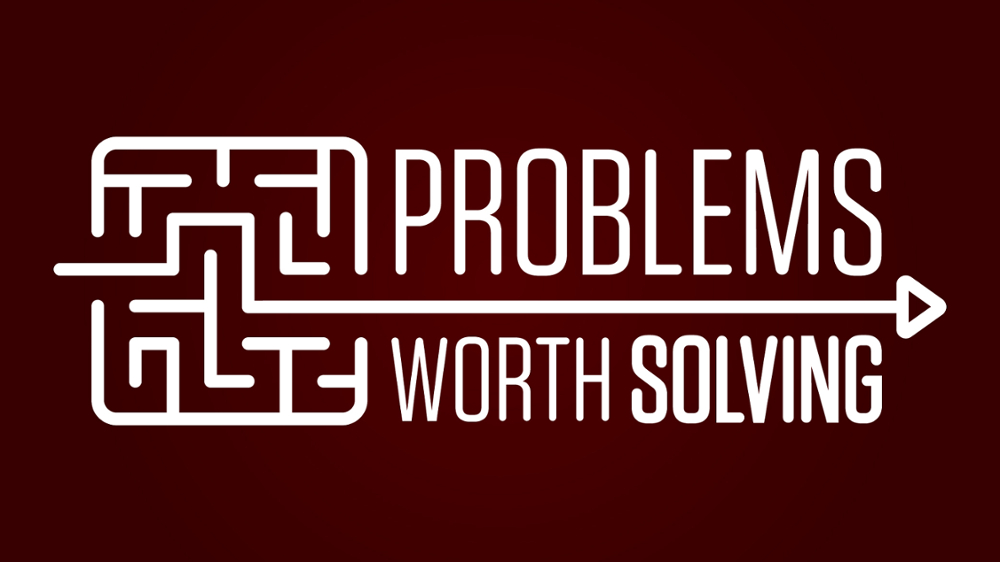
Overview
Steve Jobs famously said, “You've got to start with the customer experience and work back toward the technology, not the other way around.”
Understanding your customers’ experiences requires that you become experts in the progress they are trying to make in their businesses and personal lives and the problems they encounter. The Problems Worth Solving Competition asks participants to explore this critical part of the entrepreneur’s journey - identifying and exploring problems that could be the basis for a great business.
This competition does not require a solution to the problem, only an important problem that could be the seed of a startup or investment made by an established enterprise.
Format
Contest entries will use an online form that asks for short answers and to upload a short 60-second video. One application per person will be limited, and only the first 75 entries will be accepted.
Five finalists will be invited to present their problems live in front of judges at the main event. The presentations will consist of five minutes of a student pitching their problem and five minutes of Q&A. No slides will be used during the presentation, but you may bring one visual aid if appropriate.
There will also be three honorable mention prizes awarded. Honorable Mention winners will receive a cash award and an invitation to a private reception with judges and finalists at the Main Event.
Prizes
Each finalist will receive a cash prize. Judges will determine the prize winners as follows:
- $2,500 - First Place
- $2,000 - Second Place
- $1,500 - Third Place
- $1,000 - Fourth Place
- $500 - Fifth Place
- $250 - Honorable Mention (3 awarded)
In addition to a $2,500 award, the first-place finisher will also be awarded the honor of being the guest sponsor of a 2024-2025 Aggies Invent. One Aggies Invent for next school year will feature the winner’s problem as the theme for the event, and the winner will present their problem, provide coaching during the event and serve as one of the event judges.
Judging Criteria
Judges will evaluate the entries based on the following:
- Is the problem clear and concise?
- Is it clear what people and/or organizations have the problem?
- Is a compelling case made that the people/organizations with the problem perceive it to be worth spending money to solve?
- Is the target market large enough to support a high-growth business?
- Is it clear that the existing solutions to solve the problem are inadequate or absent?
- Do not pitch your business or product idea. Doing so will disqualify your application. Pitch problems only.
Judges
We will have judges representing Texas A&M faculty from across campus as well as entrepreneurs, innovators and experts from industry.
Eligibility
All current Texas A&M College Station students are eligible.
You must be able to be physically present for the finalist workshop and final event. Do not apply if you cannot be on campus for these events.
Finalists from previous Problems Worth Solving competitions are not eligible.
Application Tips
The best problems will combine the popularity (how many people or organizations have the problem), severity (how much pain, cost or opportunity is created) and importance (with what significance do people perceive the problem).
The written portion of the application should be used to illustrate the details and specifics surrounding your selected problem. A general problem statement won’t differentiate your application. "Everyone" is not specific enough to describe who has the problem you are presenting.
Use credible external sources to support any examples and estimates. Be sure to cite those sources.
The videos may be recorded using your laptop, smartphone or a more sophisticated camera. Pay attention to the lighting, background noises, recording volume and other distractions. Please make sure you are visible for the majority of the video as we would like to see you present the problem. You may use multimedia, advanced editing software and other embellishments, but they are not required. The judges will use the video to determine how well you know the problem and your ability to communicate it.
Check Last Year's Competition Article
Additional Resources
How to Evaluate Startup Ideas, a video from Kevin Hale from Y Combinator incubator that explains attributes of good problems for a startup to solve
The Problem Statement Canvas for Startups and Innovation Teams, an article by Marius Ursache about what makes a good problem statement and how to make yours better
99 Startup Problems, a summary of problem statements from some of the most successful tech companies
Intellectual Property
All intellectual property is owned by the competitors unless otherwise assigned. In developing their application, pitch and presentation materials, competitors should again keep in mind that it is their full responsibility to protect all proprietary and confidential information.
Competitors concerned about the protection of intellectual property may research intellectual property protection at the Texas A&M University Libraries Patent & Trademark Resource Center or the United States Patent and Trademark Office.